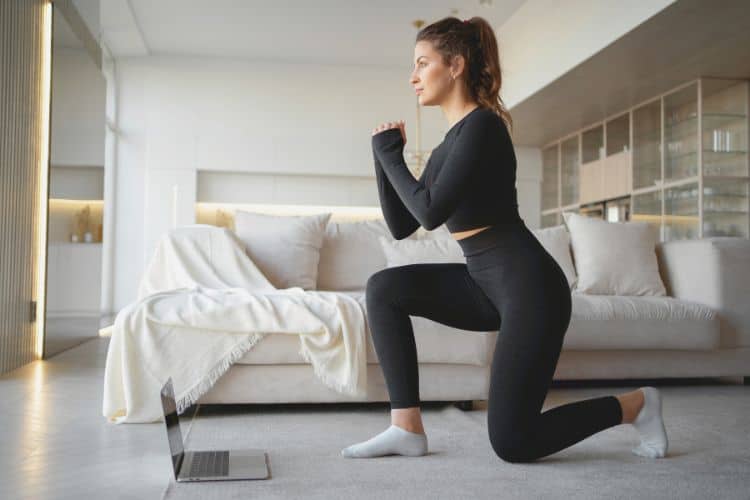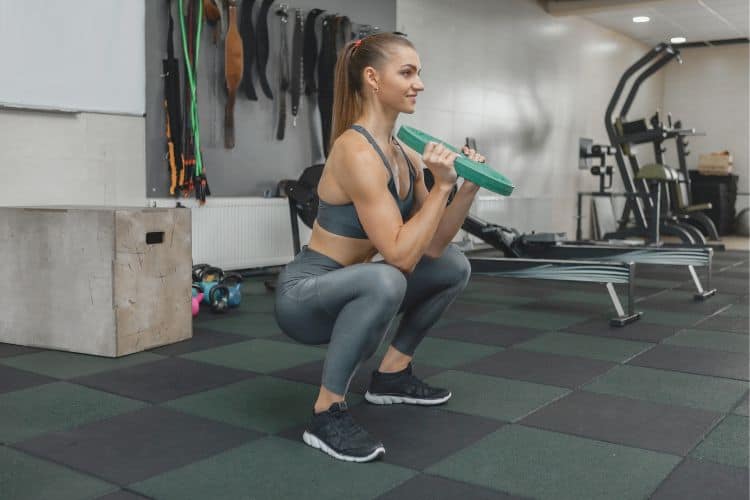Sign up for workout ideas, training advice, reviews of the latest gear and more.






If you’re short on time but want to torch calories, improve cardiovascular fitness, and build lean muscle, a 30-minute HIIT cardio workout is your perfect solution. High-Intensity Interval Training (HIIT) combines intense bursts of activity with brief recovery periods, creating a powerful fat-burning and endurance-boosting formula. Whether you’re training at home or in the gym, HIIT cardio can fit seamlessly into your daily routine and produce fast results.
In this complete guide, we’ll dive into the benefits of HIIT cardio, what makes a 30-minute session so effective, and provide several sample HIIT workouts you can follow today.
HIIT cardio, or High-Intensity Interval Training cardio, is a form of cardiovascular exercise that alternates between short periods of high-intensity movement and lower-intensity recovery or rest. These workouts are designed to elevate your heart rate quickly, improve oxygen consumption, and stimulate fat burning even after your workout ends—a phenomenon known as EPOC (Excess Post-exercise Oxygen Consumption).
While traditional steady-state cardio (like jogging or cycling at a moderate pace) is effective, HIIT provides similar or greater benefits in a fraction of the time. A 30-minute HIIT cardio session can burn more calories and stimulate more muscle activity compared to an hour-long moderate workout.
A 30-minute HIIT session strikes a perfect balance between efficiency and intensity. Here’s why this format works:
With busy schedules, finding time to work out can be a challenge. HIIT’s compact format allows you to fit in a complete fat-burning workout in just half an hour, often without any equipment.
One of HIIT’s biggest advantages is the afterburn effect (EPOC). Your body continues burning calories post-workout as it works to return to its resting state—something steady-state cardio can’t match as effectively.
Unlike typical cardio, HIIT uses bodyweight or resistance-based moves like jump squats, push-ups, and burpees. These exercises challenge your muscles, helping you maintain or build lean mass while shedding fat.
By pushing your heart rate to higher zones during the intense intervals, HIIT improves cardiovascular endurance and promotes a healthy circulatory system.
Before starting your 30-minute HIIT cardio workout, a proper 5-minute dynamic warm-up is crucial to prepare your muscles and joints, boost mobility, and reduce injury risk. Here’s a sample warm-up:
This bodyweight HIIT cardio workout is perfect for home, hotel rooms, or anywhere you have space to move. Perform each move for 40 seconds, then rest for 20 seconds. Complete 3 total rounds with a 1-minute break between rounds.
Repeat the circuit for 3 rounds (30 minutes total).
Want more resistance and strength training while still getting a cardio boost? Add dumbbells to your routine. Perform each move for 40 seconds with 20 seconds rest.
Rest 1 minute between rounds. Repeat for 3 total rounds (30 minutes).
If you’re just getting started, this lower-impact HIIT cardio session is beginner-friendly and still delivers a solid calorie burn.
Repeat for 2–3 rounds depending on your fitness level.
Finish your workout with light stretching and deep breathing to relax your muscles and aid recovery. A few great post-HIIT stretches include:
Here’s a weekly HIIT cardio schedule you can follow or adapt based on your goals:
| Day | Workout |
|---|---|
| Monday | Bodyweight HIIT (Full Body) |
| Tuesday | Rest or Low-Impact Cardio |
| Wednesday | Dumbbell HIIT |
| Thursday | Core-Focused HIIT |
| Friday | Lower Body HIIT |
| Saturday | Cardio Kickboxing HIIT |
| Sunday | Active Recovery (Yoga or Walking) |
Doing 3–5 HIIT workouts per week can help you burn fat and improve endurance significantly over time.
Always prioritize good form over speed to avoid injury. Start slower, then build intensity as your fitness improves.
Eat a light, balanced meal with complex carbs and protein 1–2 hours before your HIIT session. Post-workout, replenish with protein and hydration.
Use a fitness tracker or journal to monitor your reps, time, or intensity to measure improvement and push your limits each week.
Change exercises regularly to prevent boredom and stimulate different muscle groups.
While HIIT is safe for most healthy individuals, those with heart conditions, high blood pressure, joint issues, or injuries should consult a healthcare provider before starting. Pregnant women or beginners may need to modify intensity or choose low-impact alternatives.
30-minute HIIT cardio workouts offer one of the most effective ways to transform your body, boost endurance, and improve overall fitness. Whether you’re training with just your bodyweight or adding resistance with dumbbells, these workouts are adaptable, efficient, and proven to deliver results.
Commit to consistency, challenge yourself with progressive intensity, and you’ll see major improvements in strength, stamina, and body composition. The best part? It only takes 30 minutes a day.
Try the bodyweight HIIT session outlined above today. No equipment, no excuses—just results.
Stay up to date on the latest women’s health, fitness and lifestyle trends and tips.